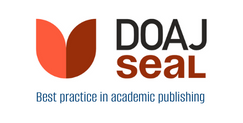Article | Open Access
Applicability of the User Experience Methodology: Communication and Employment Web Portal for Older Adults
| Views: | 2261 | | | Downloads: | 1194 |
Abstract: The purpose of this study is to redesign a web portal, oriented to communication and employment management for older adults, from the perspective of user experience, using the user experience methodology. The graphic and functional elements of the platform were considered, enhancing the effectiveness of the communication and inclusion processes and accessibility to employment opportunities. The study is part of a mixed investigation, attending the following stages: (a) exploration of the users of the ServiSenior portal platform during 2021 (constituted by 11 collaborators, 15 clients, and 30 older adults); (b) documentary analysis of the state of the art of employment portals for older adults; (c) proposal design incorporating user experience improvements; (d) testing to validate the value proposition delivered to the target audience. The results obtained were taken into account in decision-making for the approach to the design of the digital portal. This proposal is theoretically based on user-centered design, from which the user experience methodology emerges, which seeks to improve the use and quality of services of digital portals centered on users, emphasizing the attribute of universal use and access. The results obtained enhance the applicability of digital tools that serve to insert a vulnerable population in work spaces, assuming as a starting point design, accessibility, and ease of use.
Keywords: older adults; senior inclusion; user-centered design; user experience; UX methodology; web portal
Published:
© María de los Ángeles Ferrer-Mavárez, Erwin Robert Aguirre-Villalobos, Janeth Beatriz Valecillos-Pereira. This is an open access article distributed under the terms of the Creative Commons Attribution 4.0 license (http://creativecommons.org/licenses/by/4.0), which permits any use, distribution, and reproduction of the work without further permission provided the original author(s) and source are credited.




